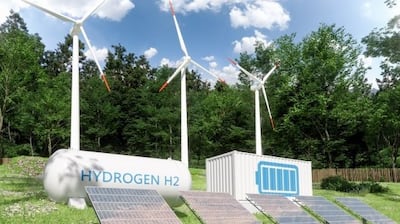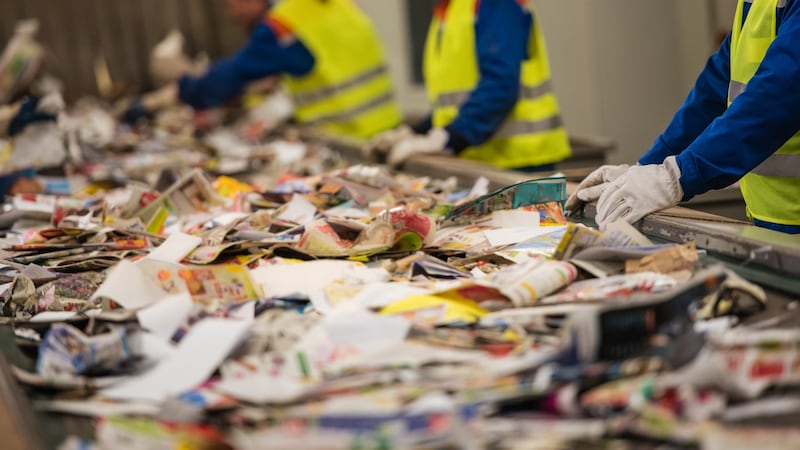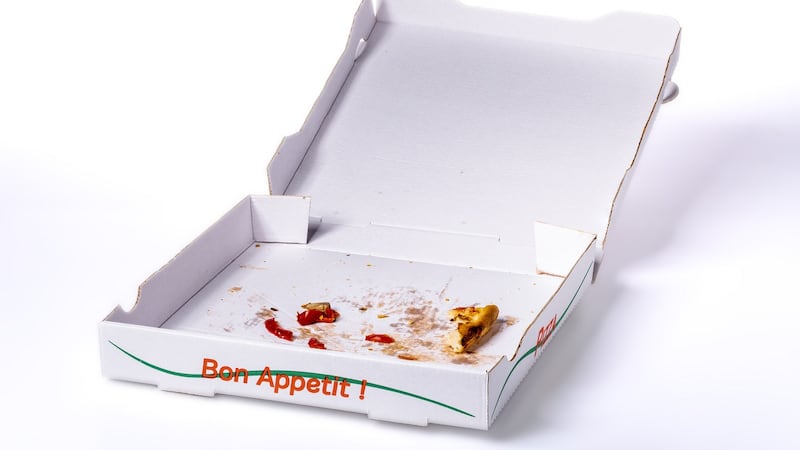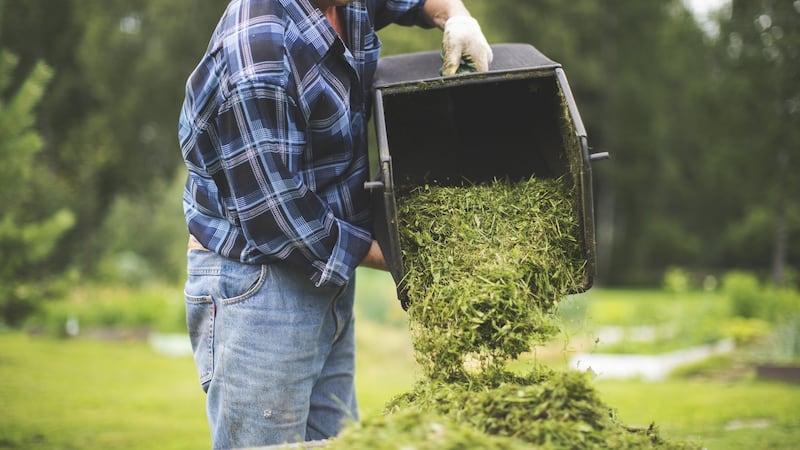This year recycling got a great deal easier. Investment in new technologies at recycling centres means that all plastic packaging waste, including soft plastic, can now be placed in your household recycling bin.
Previously soft plastics had to be placed in the waste bin, even though some were actually recyclable. Soft plastics are those you can scrunch up in your hand, such as pasta bags. Not only does the new development make life easier for householders, but as a country it helps us work towards meeting our EU recycling targets.

Sustainable Ireland Climate Action special report looks at how paying lip service to sustainability is no longer enough for business, it names the top five climate activists in Ireland and features a guide to all your recycling questions, along with a piece by Environment & Science editor Kevin O'Sullivan on Cop26 and how the stakes could not be higher.
[ The Irish Times ePaperOpens in new window ]
Currently in Ireland we recycle 31 per cent of all plastic packaging. By 2025 we will need to recycle 50 per cent, and by 2030, 55 per cent. Being able to recycle soft plastics is going to help.
"Advancements have been made to the technology that segregates the different material types in recycling facilities. The recyclable plastic is sent to specialised, polymer-specific recycling facilities. If it cannot currently be recycled, it will be sent as Solid Recovered Fuel (SRF) to replace fossil fuels at cement kilns," says Pauline McDonagh of MyWaste.ie, the official waste management website for householders and the first place to turn for guidance about what goes where.
Simply putting things in the right bin makes a huge difference. Every year recycling facilities see up to 20 per cent recyclable material going in the general waste, and up to 30 per cent non-recyclable items being put in the recycling bin.

So here’s where you can stick your rubbish.
What plastics can go in the recycling bin?
All plastic packaging, including soft plastics, can now go in your recycling bin, as long as it is clean, dry and loose. That includes plastic film from shopping, plastic drinks bottles, plastic tubs, containers and food trays, yoghurt pots, shampoo and shower gel bottles.
What are soft plastics?
Any plastic you can scrunch up in your hand, including packaging pillows, bubble wrap and bread wrappers. Also plastic carrier bags, crisp packets, the kind of wrappers you find on everything from toilet rolls to new mattresses, breakfast cereal bags, dried fruit and nut bags, cheese wrappers, baked goods film, cracker wrappers, the outer packaging for wet wipes, and detergent or dishwasher tab bags, and even the wrapper on your garden compost bales can now all go into your recycling bin.
What are hard plastics?
The kind that don’t lose their shape, such as shampoo bottles, ice cream tubs, salad bowls, household detergent bottles, mouthwash bottles and plastic plant pots. These go in the recycling bin as always. Just make sure they are clean and dry. There should be no food or liquids left in them. Stow them loosely. Do not put them into plastic bags first, or stuff some items into others, such as food tubs into cereal boxes.
Do all bin companies and waste collectors accept soft plastics in recycling bins now?
Yes.
Why do items in my recycle bin have to be clean?
Because while Ireland’s waste facilities are very high tech, there are still humans on the sorting lines who have to extract contaminated materials, which can be deeply unpleasant if things like used nappies or baby wipes are inadvertently mixed up with recycling waste. Yet still it happens. Other common contaminants include bags of ashes from fireplaces, old clothes, and garden waste.
So where should nappies go?
Your general waste bin.
And wipes?
Ditto. It might surprise you to know that baby wipes, and cosmetic and detergent wipes are neither recyclable nor flushable. They should go in the general waste bin.
What other items should NOT go in the recycle bin?
Glass bottles and jars. These should go to your local bottle bank, in the right bin depending on whether they are clear, green or brown glass.
Where do electrical items go?
Do not put these in your general waste bin. WEEE (Waste Electrical and Electronic Equipment) includes anything that has a plug or a battery and is at the end of its useful life. Such waste items typically contain all sorts of hazardous components which need to be disposed of correctly. By recycling them, you also help to conserve resources such as plastics, glass and metals which can be recovered and reused again in industry.
What about batteries?
These are not allowed in your recycling bin. You can dispose of used batteries in special blue boxes which are located in many retail outlets, including local supermarkets, or at local WEEE drop-off points or recycling centres.
Retail outlets that sell batteries will take back old batteries of similar type. It’s a free service and you don’t have to buy new batteries to avail of it. By not sending these to landfill you’re protecting the environment from potential hazardous chemicals.

And old lightbulbs?
Dispose of these at recycle centres which accept them or return them to retailers.
What should go into my food waste bin?
Though the answer is in the name, there are always some items which can cause confusion. Egg shells, for example. These should be placed in your food waste bin but put the egg boxes in your recycling bin.
What about foil wrap from butter?
This is not recyclable at all and should be placed in the general waste bin.
Coffee pods?
These are typically made from many different materials, which makes them unsuitable for household recycling and for food waste bins. However, some makers will allow you return them for recycling. In other cases they have to go into the general waste bin.
Can I put clothes and shoes in the recycle bin?
No. Good items should go to a charity shop or the local clothes bank. The rest in the general waste bin.
Is fruit and veg netting recyclable?
No. It should be placed in the general waste bin. If you can, buy loose.
What do I do with garden waste?
Grass clippings and plant cuttings can go into the food waste bin. If you’ve loads, bring it to your local recycling centre. Never put any garden waste into the recycling bin.

What about old pens and markers?
These have to go into the general waste bin because it’s too difficult to retrieve all the various components. Ditto things such as blister tablet packs and old nail polish bottles. Used matches have to go in the general waste bin too.
Pizza boxes
Once you’ve scraped leftover crusts into the bin, the takeaway box can go into the recycling bin, even if it has grease on it. However, if a part of the box has melted cheese on it, or a passata-y smear, tear off and place that piece of the box in the food waste bin. The box from frozen pizza bought in a supermarket is 100 per cent recyclable.
What do I do with the protective polystyrene around my new appliance?
Polystyrene is recyclable but it should not go into your household recycling bin because it breaks up and becomes useless. Check with your local recycling centre, some will accept it.
Where should used kitchen roll go?
If you’ve used it just to wipe your hands, or to clean out food pots and pans, you can put it in the food waste bin. Otherwise soiled kitchen towel goes into the general waste bin. Ditto paper napkins.
Used tin foil?
If it’s soiled, it cannot be recycled and has to go into the general waste bin. However, you can place clean aluminium or tin foil in the household recycling bin, just scrunch it first.
Dry soup and sauce packets?
Because these are made from foil-lined paper, they cannot go into the recycling bin, but must instead go to general waste.
Toothpaste tubes?
Again, because they are made of a mix of material, they have to go in the general waste bin.
Pet food, cans or pouches?
Cans are recyclable and can be put in the recycling bin. Wash them out to take out any food residue first and allow them to drip dry. They have to be washed both for hygiene and because waste companies cannot legally export steel cans and food waste in the one shipment. Pouches are a bigger problem. They are typically made from a plastic outer layer and a foil inner layer, making them almost impossible to recycle. They go to the waste bin, so buy cans.
Where do I put old aerosol cans?
These are typically pressurised, like deodorants or air fresheners, and considered hazardous, so cannot go into your recycling bin. If your local recycle centre doesn’t accept them, they have to go in your general waste bin.
What do I do if I’m running out of recycle space?
Make sure you’re only putting in materials that can be recycled. Flatten boxes, plastic bottles and cans.
Do I have to remove labels and lids for recycling?
No, these get removed during the recycling process.
What happens to my household waste?
Ever wonder what happens to your waste? David Duff, environmental health and safety manager Thorntons Recycling sorts it all out.
Recycling
The lorries are tipped in a reception hall and inspected. The material is then pushed using large loading shovels into the incoming stockpile. From this stockpile the material is fed into processing equipment. The waste is conveyed through a series of mechanical sorting machines which sort the bulk of the material by size, density or polymer type.
However, after each machine is a human quality-control station where staff have to pick out the items the machines have missed and also have to pick out the items that the machines cannot identify – such as nappies.
Once the material passes the human quality-control station, it falls into separate bulking bays. The material is baled, loaded into containers and consigned to dedicated processing or recycling facilities in Europe or Asia typically, to be recycled back into new products.
Compost
The collection lorry tips in the composting hall reception area. Incoming material is mixed, using large loading shovels, with wood chip and oversized compost which has not fully broken down in the first pass through the process. This oversized compost is full of the healthy bacteria and bugs so it kickstarts the composting process for the new material.
The mixed material is put into large composting bays and air is forced up from the ground through the compost. This provides a favourable environment for the bacteria to work and break down the food waste. The bays are turned into new bays every three weeks and then screened to remove any contamination.
Once contamination is removed, the over-matter is sent back to the start of the process and the screened compost is stabilised in a large, enclosed bay. Here the compost is effectively cooked. This kills any pathogens and germs to ensure that the compost given to the farmer is clean and safe to use.
Waste
The collection lorry tips the lorry in the reception hall of the waste processing site. The material is picked up using cranes and fed into the processing plant. Typically these processing plants are fully automated and there is no human quality-control staff as the waste is dirtier. The machines sort the waste by using magnets, eddie currents and wind shifters to separate heavy from light material, as well as optical sorters.
Organic “fines” or residue are separated and sent to a facility such as a composting plant. Here the organic fines are treated similar to the compost. At the end of the process the small litter fraction is consigned to an incinerator or landfill and the stabilised organic fines are sent to landfill to be used as daily landfill cover. The benefit of this process is that when the organic fines are composted rather than landfilled directly they process carbon dioxide and not methane, so there is less of a greenhouse gas effect.
The machines will sort out steel and aluminium from the waste and these will be sent for recycling.
Lightweight contaminant materials will be separated by the wind shifter and further shredded to less than 25mm and this shredded material goes on to become the solid recovered fuel or a fuel for incinerators.
Heavy material, such as nappies, old textiles and shoes, will be separated and consigned to the incinerator or a landfill for disposal.














